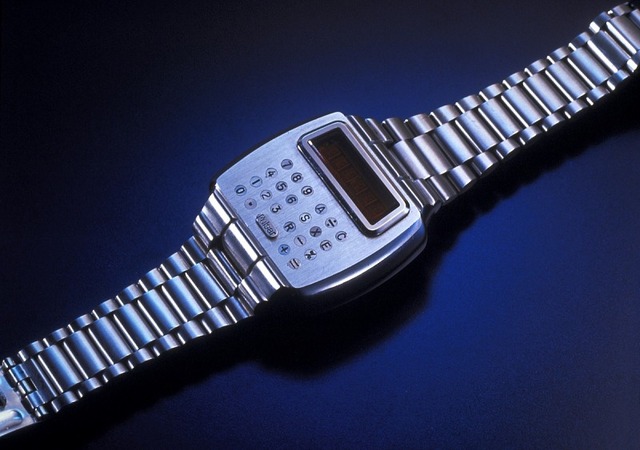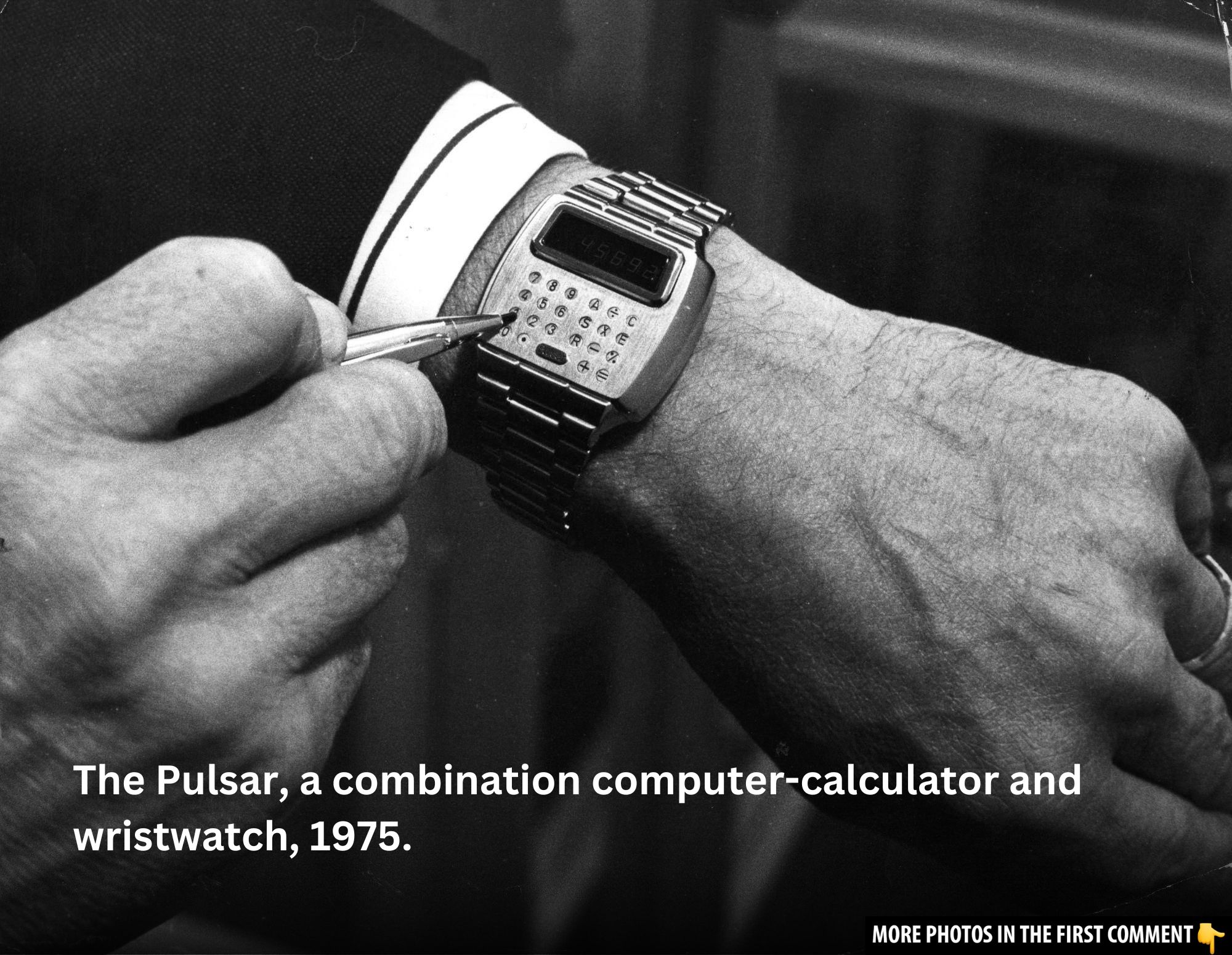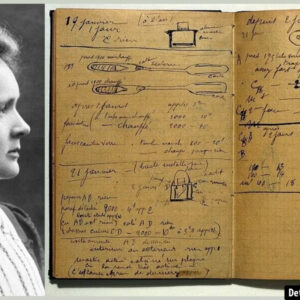Imagine a time when the concept of carrying a calculator on your wrist seemed futuristic. In the 1970s, technology was rapidly evolving, and the desire for convenience in everyday life was greater than ever. From the handheld calculators of the 1960s to the invention of the first calculator watch in 1975, the demand for portable calculation tools was high. This led to the birth of the calculator watch, which merged functionality with fashion in an unexpected and revolutionary way. No longer would we have to carry bulky gadgets to perform simple calculations—calculator watches had arrived, offering a compact and stylish solution.
Pulsar: The Pioneer of the Calculator Watch (1975)
The first true calculator watch was introduced in 1975 by the Time Computer Calculator Company, in collaboration with Pulsar, a brand under Hamilton Watch Company. This groundbreaking device was large and bulky by today’s standards, but it was revolutionary at the time. The initial models came with tiny keys, and to operate them, users had to use a stylus—a far cry from the intuitive designs we know today. The use of LEDs for the display presented another challenge, as they consumed a lot of power, causing the battery life to be relatively short.

Despite these early challenges, the Pulsar calculator watch caught the imagination of consumers. Priced at nearly $4,000 for the gold-plated version, it was as much a luxury item as a functional tool. The initial designs, although cumbersome, laid the foundation for the many innovations that followed.
Video
Watch the video “Pulsar P3 – When a Digital Watch Cost More Than a Rolex – 1970s LEDs” to learn about the iconic digital watch that was a symbol of luxury in the ’70s.
The Competition Heats Up: HP-01 and the Rise of Electronics
![Introducing the HP-01, a groundbreaking watch with a calculator that combined luxury and technology (photo: [Stanlkocher] CC-BY-SA-3.0).](https://historical.vncash24h.com/wp-content/uploads/2025/02/Introducing-the-HP-01-a-groundbreaking-watch-with-a-calculator-that-combined-luxury-and-technology-photo-Stanlkocher-CC-BY-SA-3.0.jpg)
While HP’s calculator watch wasn’t perfect, it certainly set a standard for future models. However, just like its predecessor, it was more of a luxury item than a truly practical tool. These early calculator watches, while innovative, had a long way to go before they would be adopted widely.
Seiko, Citizen, and Lesser-Known Brands: Expanding the Market
As the demand for these gadgets grew, other companies began experimenting with calculator watches. Seiko, Citizen, and even lesser-known brands like Uranus Electronics and Hughes Aircraft started releasing their own versions, each bringing something unique to the table. While the first models were LED-powered, advancements in technology soon made LCD screens the standard. This was a game-changer, as LCDs were more power-efficient, allowing calculator watches to last longer on a single battery.
Seiko’s models, such as the C-515, became a notable part of the market, though their tiny buttons made them a bit challenging to operate. On the other hand, Citizen embraced an innovative round design, with tiny buttons located around the circumference of the watch, which appealed to those looking for something more futuristic.
National Semiconductor: A Big Hit in the 1970s
![The National Semiconductor’s calculator watch, featuring a unique flip-down keyboard for easy use (photo: [Mister RF] CC-BY-SA-4.0).](https://historical.vncash24h.com/wp-content/uploads/2025/02/The-National-Semiconductors-calculator-watch-featuring-a-unique-flip-down-keyboard-for-easy-use-photo-Mister-RF-CC-BY-SA-4.0.jpg)
While these calculator watches remained niche products for many years, their influence on personal technology continued to grow, paving the way for the handheld calculators and, eventually, the smartphones we use today.
The Casio Revolution: Dominating the 1980s
The real game-changer came in 1980 with Casio’s entry into the market. Casio, known for its affordable yet functional watches, introduced the C-60, a basic calculator watch that set the standard for future designs. The C-60 had a compact and sleek design that made it easy to wear, and its calculator features were simple yet effective. Soon after, the CA-50 and CA-53W were released, which gained even more popularity thanks to their appearances in the iconic films Back to the Future II and III.
These Casio models were beloved for their practicality and affordability, making them more accessible to a wider audience. With the addition of features like memory storage for phone numbers and addresses, scientific functions, and even a remote control for televisions, Casio solidified its place in the calculator watch market.
![The CFX-400: A premium scientific calculator watch that even handled hexadecimal calculations (photo: [Septagram] Public Domain).](https://historical.vncash24h.com/wp-content/uploads/2025/02/The-CFX-400-A-premium-scientific-calculator-watch-that-even-handled-hexadecimal-calculations-photo-Septagram-Public-Domain.jpg)
Fading Popularity: The Decline of Calculator Watches
Despite their initial success, calculator watches began to fade in popularity as technology advanced. By the late 1980s and early 1990s, personal digital assistants (PDAs) and cell phones became more common, offering more advanced features that outpaced the calculator watches. As calculators, smartphones, and other gadgets became more powerful and portable, the niche market for calculator watches began to dwindle.
The calculator watch, once a symbol of technological innovation, had run its course in mainstream fashion. However, its impact was not forgotten. Many early models became collector’s items, and people who had owned these devices fondly remembered them as a key part of their childhood or adolescence.
The Legacy of Calculator Watches: Then and Now

While calculator watches are no longer the cutting-edge tech they once were, they have left a lasting impact on the way we think about wearable technology. These early devices paved the way for the smartwatches we wear today, offering a glimpse into how technology would one day be integrated seamlessly into our daily lives. Even though they may be viewed as retro or niche products now, calculator watches remain an important part of the history of wearable tech.
Today, you can still find vintage calculator watches on collector websites or auction sites, with some fetching high prices due to their rarity and cultural significance. Brands like Casio continue to sell vintage-series calculator watches, and some people still enjoy the quirky charm of these retro devices.
Video
Check out the video “Digital Watches: Tech Evolution” to explore the history and advancements of digital timepieces.
Conclusion: The Enduring Appeal of Retro Technology
The calculator watch remains a symbol of a bygone era of personal technology, one where innovation met fashion in an unexpected way. While their practical uses have been eclipsed by modern gadgets, these timepieces will always be cherished by collectors and enthusiasts who remember them fondly as a unique intersection of technology, style, and nostalgia.
The legacy of the calculator watch lives on in today’s wearable tech, reminding us of the rapid advancements we’ve made and the creativity that led to some of the most innovative devices of their time. As we continue to embrace new technologies, we can look back at the calculator watch as a reminder of how far we’ve come—and how a simple idea could change the way we experience time itself.



